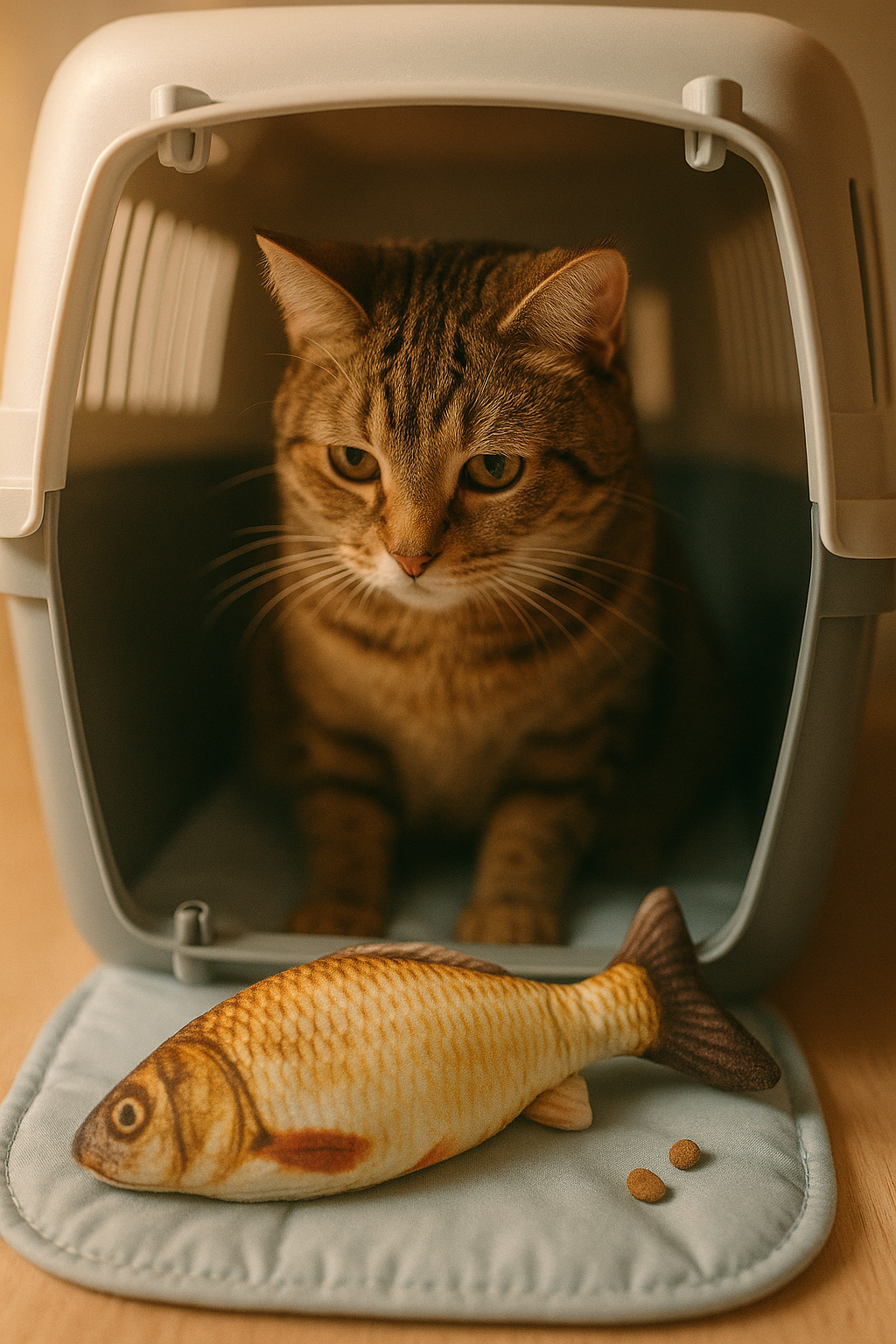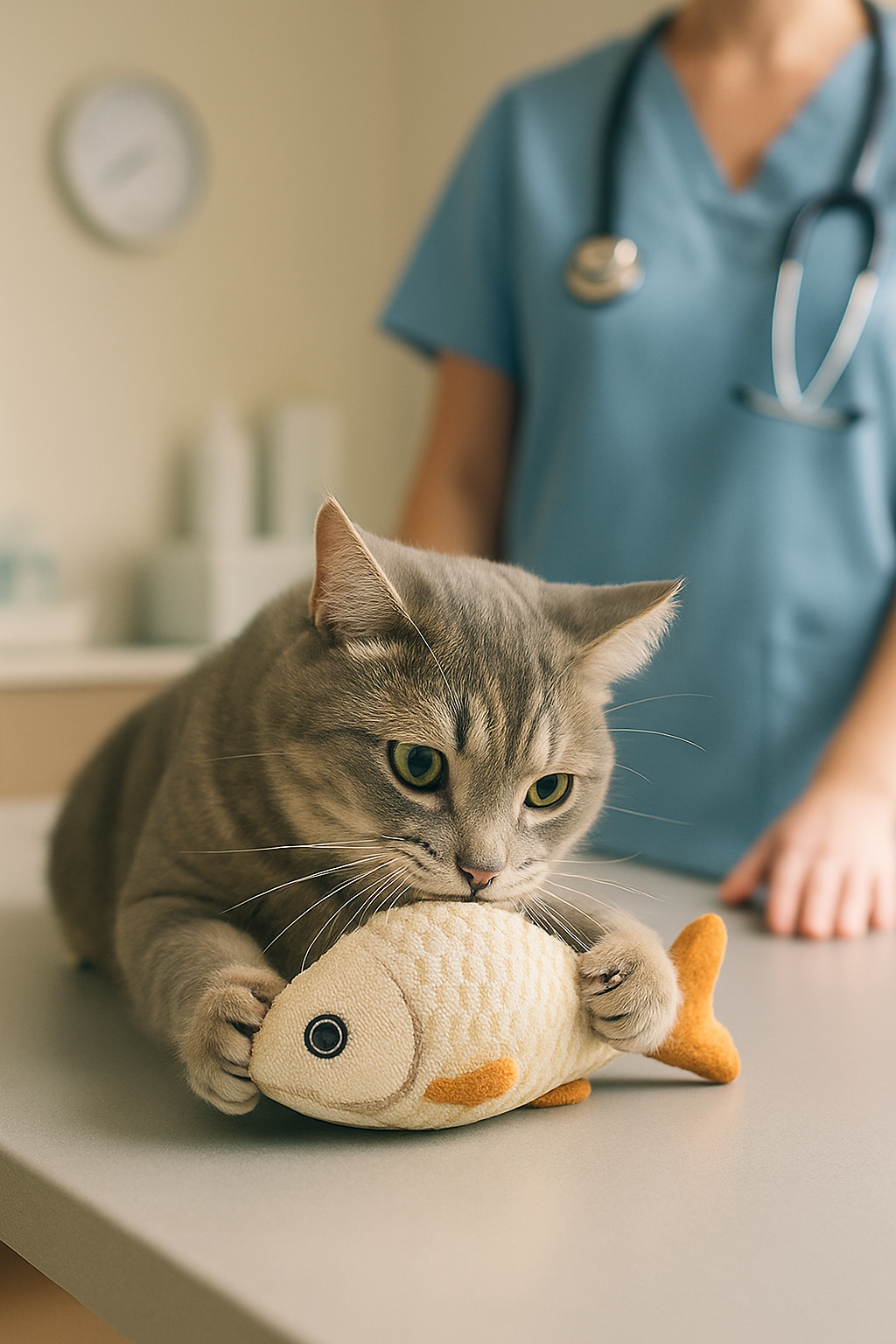Vet visits can feel like an emotional rollercoaster—for both cats and their owners. The unfamiliar smells, cold exam tables, and strange hands reaching in can quickly turn a routine checkup into a stressful experience. But there’s a simple, often overlooked solution that can make a big difference: bringing along a cat toy to distract during vet visits.
Cats, by nature, are creatures of habit. When removed from their territory and exposed to new stimuli, they often react with fear or defensiveness. Hiding, hissing, trembling, or even aggressive swats aren’t uncommon in the exam room. This is where distraction becomes a powerful tool. A carefully chosen toy can redirect your cat’s attention, lower stress, and make the entire visit smoother—for your pet, the vet, and you.
Not all toys are suitable for this specific setting. The best cat toy to distract during vet visits is one that is small, familiar, and easy to carry. Think soft plush toys infused with catnip, chew-friendly matatabi sticks, or compact crinkle balls that engage multiple senses. These toys offer something comforting and familiar in an otherwise intimidating environment.
Toys that make noise (like gentle crinkles or rattles) can help hold your cat’s focus. Even better are toys your cat already loves and associates with home. That familiarity acts as a kind of emotional anchor—reminding them of safety and normalcy. For highly food-motivated cats, a treat-dispensing toy can be a double win: it distracts and rewards at the same time.
 Veterinarians often recommend letting your cat explore the toy while still in the carrier, especially if there’s a wait. Placing the toy inside the carrier along with a familiar blanket can help ease tension before the appointment even begins. During the exam itself, holding the toy close to your cat or letting them nibble, knead, or play can keep their stress levels lower—even if just for a few crucial minutes.
Veterinarians often recommend letting your cat explore the toy while still in the carrier, especially if there’s a wait. Placing the toy inside the carrier along with a familiar blanket can help ease tension before the appointment even begins. During the exam itself, holding the toy close to your cat or letting them nibble, knead, or play can keep their stress levels lower—even if just for a few crucial minutes.
For younger or more energetic cats, interactive toys like feather teasers or wand toys can work wonders while waiting in the exam room. They help burn off nervous energy and release calming endorphins through movement. Just a few minutes of play can change the tone of the visit entirely.
Of course, no toy is a miracle cure for anxiety. Some cats may still require more support, including calming sprays, pheromone diffusers, or gentle handling techniques. But pairing these methods with the right cat toy to distract during vet visits adds an extra layer of comfort—and sometimes, that’s all your cat needs to feel safe enough to cope.
In the end, a toy might seem like a small gesture, but it can have a big emotional impact. It shows your cat that you’re thinking of their needs, even in a high-stress setting. So before your next vet appointment, pack the essentials: carrier, medical records, and don’t forget that one toy your cat just can’t resist. It might just be the secret weapon to a calmer, smoother vet experience.









